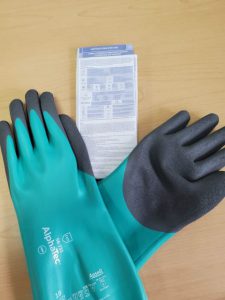 The only effective personal protective equipment (PPE), is the one that is worn. It is not only a legal requirement to wear the PPE as described in a pesticides label, but good practice for protecting yourself from pesticide exposure. Making that PPE more comfortable will not only ensure you are complying with the label, but will reduce the incentive to remove, alter, or otherwise be distracted by this necessary safety component.
The only effective personal protective equipment (PPE), is the one that is worn. It is not only a legal requirement to wear the PPE as described in a pesticides label, but good practice for protecting yourself from pesticide exposure. Making that PPE more comfortable will not only ensure you are complying with the label, but will reduce the incentive to remove, alter, or otherwise be distracted by this necessary safety component.
Perhaps the most important piece of PPE that a pesticide applicator can wear are the gloves. Nearly 97% of pesticide exposure occurs via contact with the skin, and the hands are arms are the most common place for this to occur, making proper glove selection critical (https://edis.ifas.ufl.edu/pi157). Wearing thicker reusable gloves is often required, and desired for applications, but many hours wearing these looser gloves can cause blisters and chaffing.
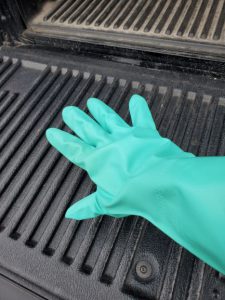
Some applicators resort to lotions, powders and other means to try and keep their hands dry, but these methods have marginal success. In my experience putting on smaller tighter surgical gloves, made of nitrile can reduce this chaffing. These gloves keep hands dry and protected from chaffing, particularly if powder is put on the hands before the surgical gloves are added.
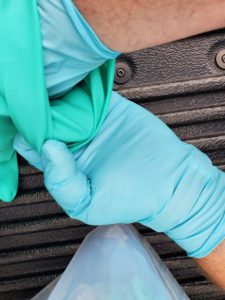
Comfort is not the only added benefit of this second layer of glove, you can also increase safety and reduce possible exposures. This secondary layer could protect against exposure if there is an unknown tear in the outside pair of gloves. Additionally, the inner gloves can be a protection when removing the outer gloves, which may have been exposed to drips and drift from the pesticide. Although properly rinsing and cleaning gloves before removal is the best practice, this is an easy step to overlook so the extra protection is that much more important. Once the outer gloves are removed, using sterile techniques to remove the inner gloves can ensure no exposure to bare skin (https://www.cdc.gov/vhf/ebola/pdf/poster-how-to-remove-gloves.pdf).
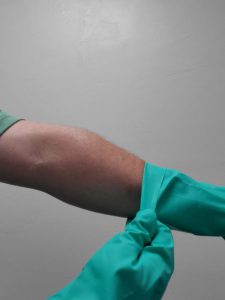

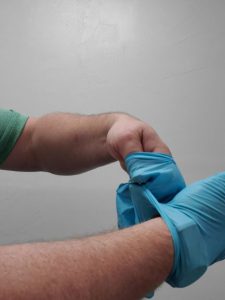

Always follow the instructions as found on the pesticide labeling to ensure you are wearing ALL the PPE required. Beyond merely complying with the label, finding small things, such as inner gloves, that make it more comfortable and much more likely to be worn properly, will help ensure that your PPE is used ALL the time, EVERY time.
Click To Subscribe
 0
0
